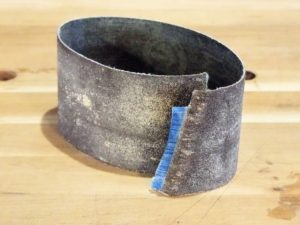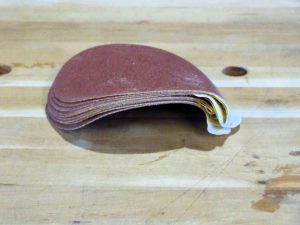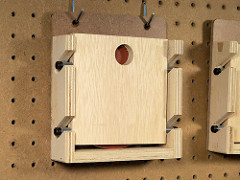An Interview with RJ
04 09 2012

A big part of customer service is answering questions. While we have FAQ's posted, and you can chat live with a service representative right on our website, I decided to sit down with RJ Stroman, the owner of 2Sand.comand talk about some of the questions I see popping up in the online woodworking forums.
Question: I recently bought some boxes of sanding belts at an auction that were a few years old. It seemed that all of the belts broke at the tape line much sooner than I expected. Do sanding belts have a shelf life?
Yes, they do have a shelf life! We warranty our belts for one year. You can expect up to three years of shelf life if they have been stored carefully, but beyond that do not expect much. Changes in heat and humidity will cause the adhesive to dry out and fail over time.
Question: Is there any way to store them so that they last longer?
To get the most shelf life out of your belts, keep them sealed in the original packaging and try to store them where they will not experience large changes in heat or humidity. Never store them on a cement floor for example. A dry cabinet drawer or shelf is the best bet.
Question: What other sanding supplies have a shelf life?
The tape joint is the weak link in a sanding belt. Sheet and disks rarely have issues with storage, and virtually none with shelf life. Obviously, sticky-backed sanding disks need to be kept with the adhesive covered, and hook and loop disks should be kept away from chips and fibers that might get stuck in the loops. I do sometimes talk with folks who wonder about the adhesive on sticky back disks failing due to age, but that is most likely the result of a poor adhesive batch from the manufacturer rather than an age issue.
Question: Over time, even unused sandpaper tends to curl. What causes this and how can I prevent it?

Again, the issue here is moisture. Just like wood table top, if one side gains or looses moisture faster than the other, it can warp, or in the case of sandpaper, curl. Paper backed sheets will tend to curl with the grit inward since the paper gathers moisture more readily than the bonded grit face. Sticky-backed disks will tend to curl in the opposite direction, since the back has both a layer of adhesive and a liner keeping the adhesive clean. The grit face will tend to absorb more moisture there.

o keep disks from curling, store them with some weight on top to help keep them flat.
Question: Any other thoughts on old sanding supplies or storage before we go?
Well, I do not have any empirical evidence, but my instincts tell me that older sanding supplies may not always be comparable to newer counterparts. For example, if you were to buy say a ten year old batch of sandpaper at an auction, even for a very good price, would it be just as good as new stock?
While it should be perfectly usable if stored reasonably well, there have been many advances in both adhesives and manufacturing technologies over the last decade, and I wonder if the older material would measure up in a head to head test. Just something to think about.
I certainly invite you to add your thoughts or send along ideas that have worked well for you. Please feel free to add your comments here on the blog, on our Facebook page, or via Twitter. Let us know what you think! -2Sand.com

